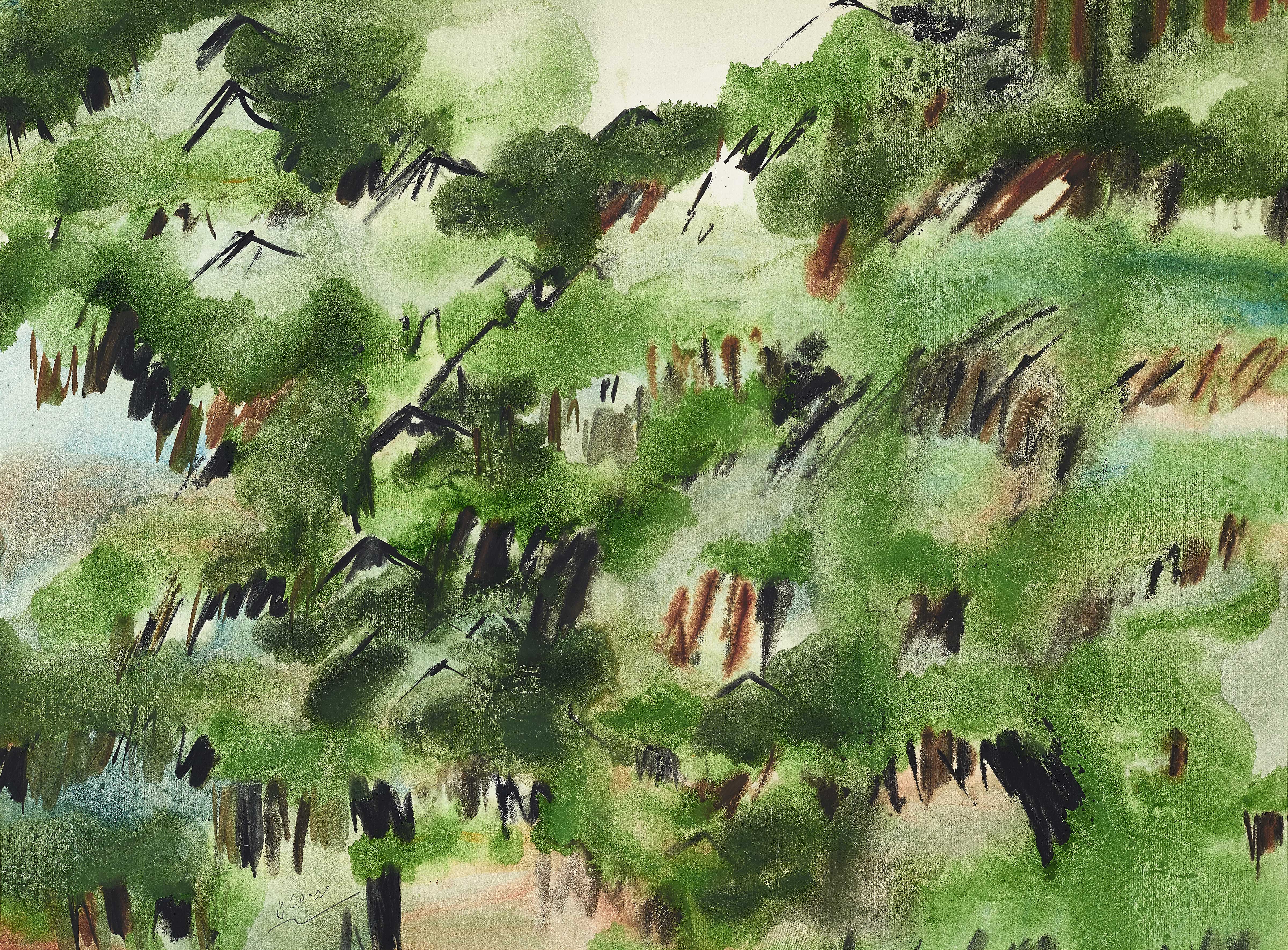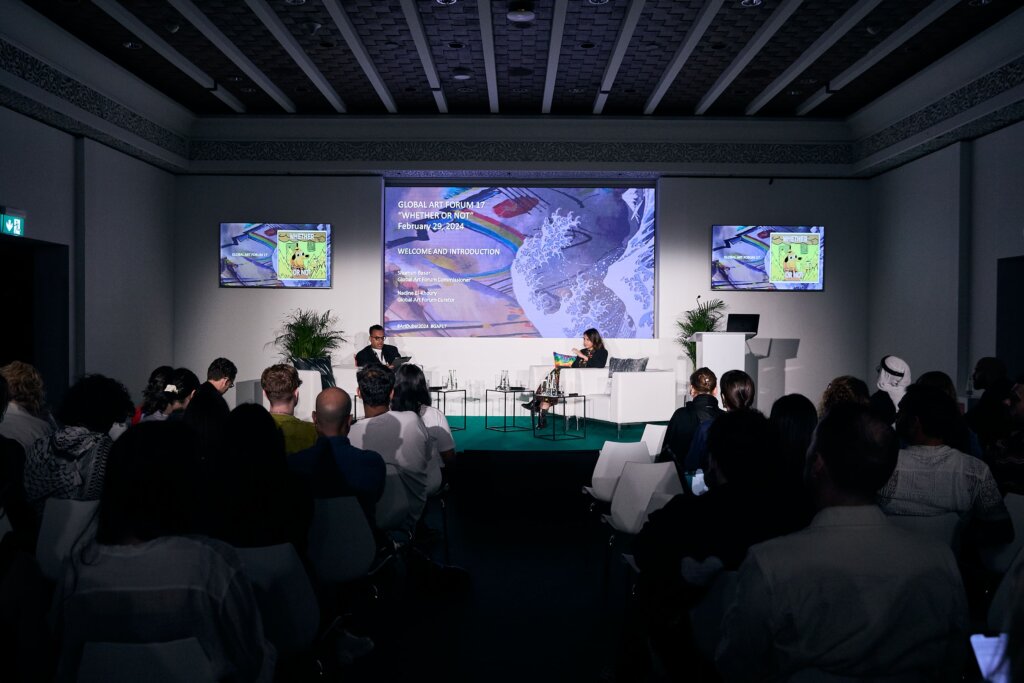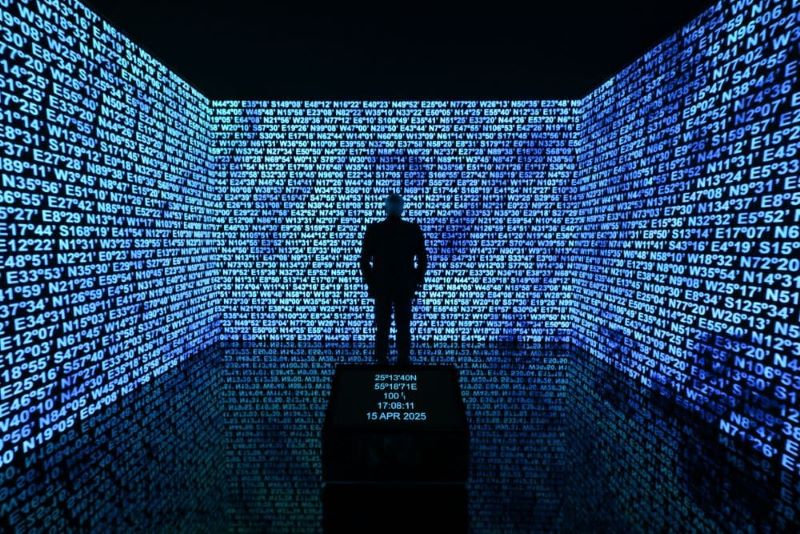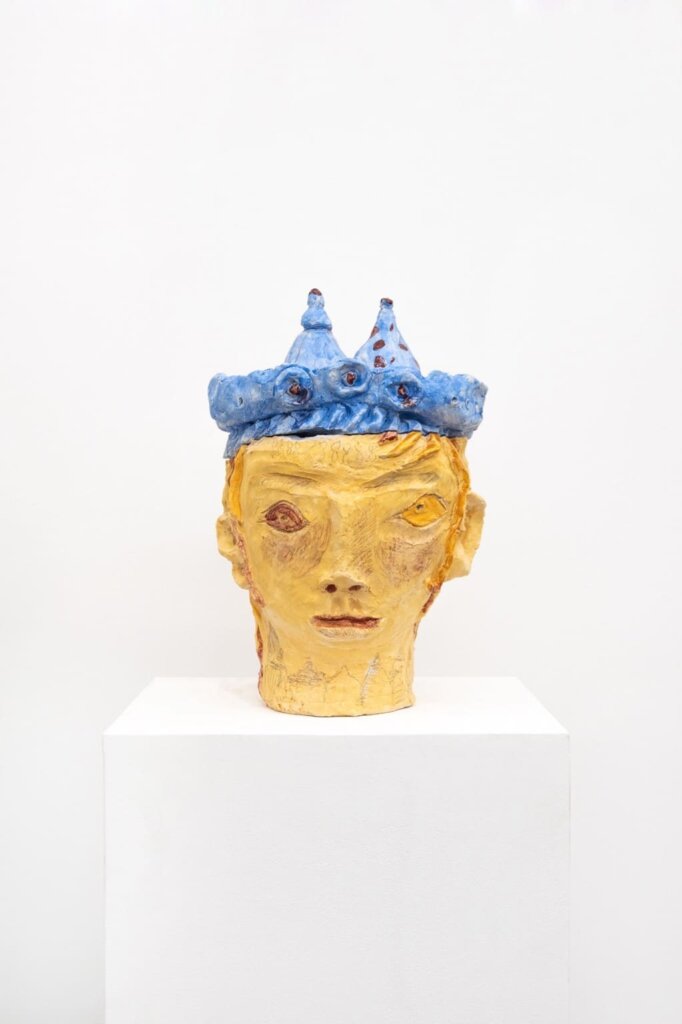‘Rewind’ is a feature series on the Art Dubai blog, looking at the life and personality of a Modern artist from the Middle East, Africa or South Asia, who is connected to the fair through one of the Art Dubai Modern participating galleries. The stories are told through the eyes of a close relative, and are written by Myrna Ayad.

Farideh Lashai, Rosenthal Exhibition, 1968.
In 2013, Art Dubai’s Projects were dedicated to the memory of Iranian-born artist Farideh Lashai (1944-2013). Following major exhibitions at the Tehran Museum of Contemporary Art (2015), the Sharjah Art Foundation (2016), the Museum of Fine Art Ghent (2016), Lashai’s work is currently on view at the Prado Museum in Madrid. It has been a little over four years since the Iranian artist passed away after battling cancer, and during this time, her daughter Maneli Keykavoussi has created an estate for her mother’s work and sought to promote it at institutions around the world. Here, she shares some memories of life with Lashai and aspirations for her mother’s legacy.

Farideh Lashai, 1990.

Farideh Lashai, Germany, 1960s.
“The weirdest thing is that I don’t miss her and I was bewildered by this. She was a loving, amazing mother and we had a symbiotic relationship, there was so much communication between us. I was her audience. I do get sad and sometimes crazy and turbulent inside, but the missing part, well, she’s very present all the time and her presence is quite intense.
Growing up, there were a lot of things I didn’t understand. I was born on June 29 1981, the day after the Hafte Tir bombing in Tehran at the headquarters of the Islamic Republic Party that killed 72 party leaders. When I was three, we moved to the USA as immigrants because of the Iran-Iraq war. We didn’t have a home, Farideh had $20 in her pocket, and we moved from place to place in Greyhounds, which weren’t safe or nice either. On one trip we did was from Los Angeles to Miami, people were shooting heroin on the bus. I remember Farideh kept me close to her and all the while, we knew Tehran was being bombarded. You experience that even if you’re young; that intensity stays with you.

Farideh and Maneli at the beach, 1984-1985.
She then decided to move back to Tehran when the city was being bombed. Somehow the experience of war and losing family and friends is more intense being away; when you’re in the fire, you tolerate it much better, but when you’re away, it’s harder.
Amazingly, she had an exhibition (at Classic Gallery) during this time, her first after the Islamic Revolution. People queued, the show was rehung twice and sold out. Sirens went off during the show and we would rush underground. For me, as a child, it was like a party with everyone coming together. I didn’t understand the horror of death. She was so ashamed to exhibit her work during the war because it was beautiful and floral. When people cried seeing the paintings, she asked them why and they said they were thirsty for some beauty. That was what was coming out of her then, maybe a form of psychological escape. Corpses came after that, which reveal an intensity of war and the loss of her mother.

Untitled, 1977. Oil on Paper, 55×75. Collection of the Tehran Museum of Contemporary Art.
Farideh really lived a fast life, she was a fighter, a warrior. She painted and wrote all the time, always intensely. She went through very extreme experiences since childhood – her leftist beliefs got her imprisoned for two years and she belonged to a family divided because of politics (her sister was the head of protocol at the Shah’s court, her father was Governor of Tehran, and her brother, who headed a student confederation, revolted against the Shah).
That same intensity continues afterwards: the Iran-Iraq war, the death of her mother, three cancer attacks and suffering the disease for 20 years. Throughout this time, her painting was her voice, it brought out all these turbulences. The way to calm everything down was to release this tension through art. However serene some paintings appear, even if they’re inspired by nature, the lines are intense. So, thank god for painting because turbulence was released. Farideh’s (later) videos are more focused on thought and observation rather than an outpouring.
And here we are, in Madrid at the Prado Museum, with one of Farideh’s seminal pieces on show: When I Count, There Is Only You…But When I Look, There is Only a Shadow (2012-13) based on Francisco Goya’s The Disasters of War. This has been one of the most dramatic and amazing presentations of her work. It sits between two works by Goya and altogether there are three rooms: the first features Farideh’s work, and the large doors open to two other rooms with Goya’s pieces, one of which contains his black paintings and the other houses The Disasters of War.

Untitled, 2008, Oil on Canvas 180×160. The Tia Collection.
His black paintings were done when he was very sick and created towards the end of his life; through them he addresses external disasters and violence but also human beings’ internal vices, melancholy, the whispers in his ear (he lost his hearing). The communication between his work and Farideh’s is quite clear: she also did her piece towards the end and they both went through similar life experiences before they passed.
Anna Martínez de Aguilar, who curates this show, has always been very passionate about Farideh’s work, almost more than I am. I asked myself why and I think that Farideh herself was so passionate and intense that it became infectious, even after one dies. Now, I am focused on taking her work to more museums, particularly in the USA. The ambition is to continue that duty, because I believe that her work is worth it. She deserves it. She is worth it.”
All images courtesy of Maneli Keykavoussi and the Lashai Estate.













